OAuth 2.0
All API endpoints are authenticated using OAuth 2.0 standards. A client Id and client secret must be exchanged for a shortlived access token. This access token is then used to authenticate further requests.Auth Flow Diagram
The following diagram illustrates the authentication flow with Pipevest.
Usage
1
Access Token Request
2
Authenticate Requests with Token
Scopes
Granular scopes are yet to be implemented. All tokens are scoped to have both
READ and WRITE permissions| Name | Permission | Status |
|---|---|---|
read | Read access across all resources | ACTIVE |
write | Write access across all resources | ACTIVE |
HTTP Signatures
Learn how to use HTTP signatures to improve API integrity
